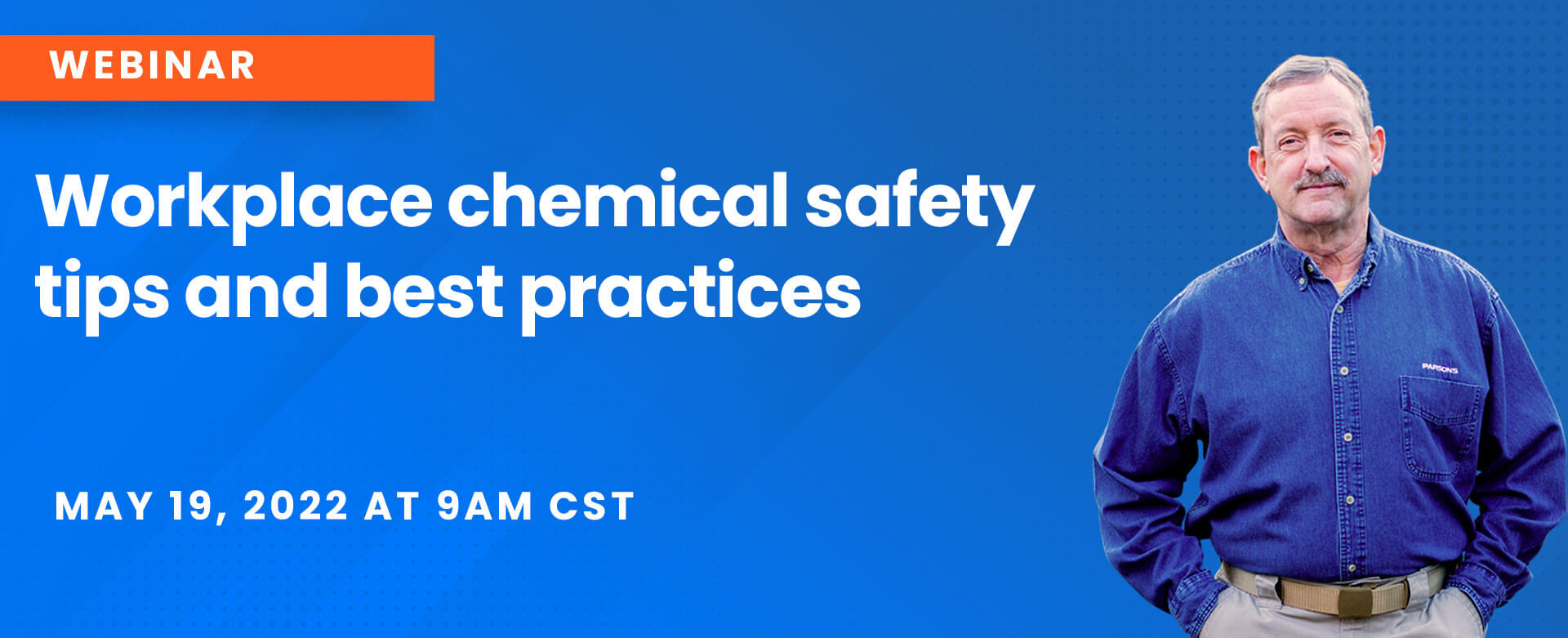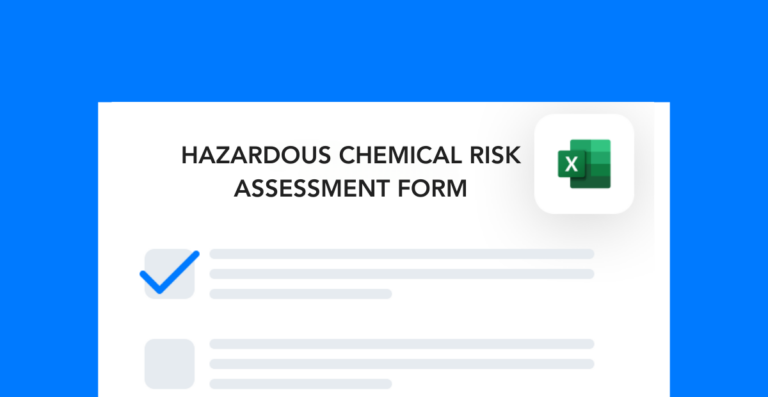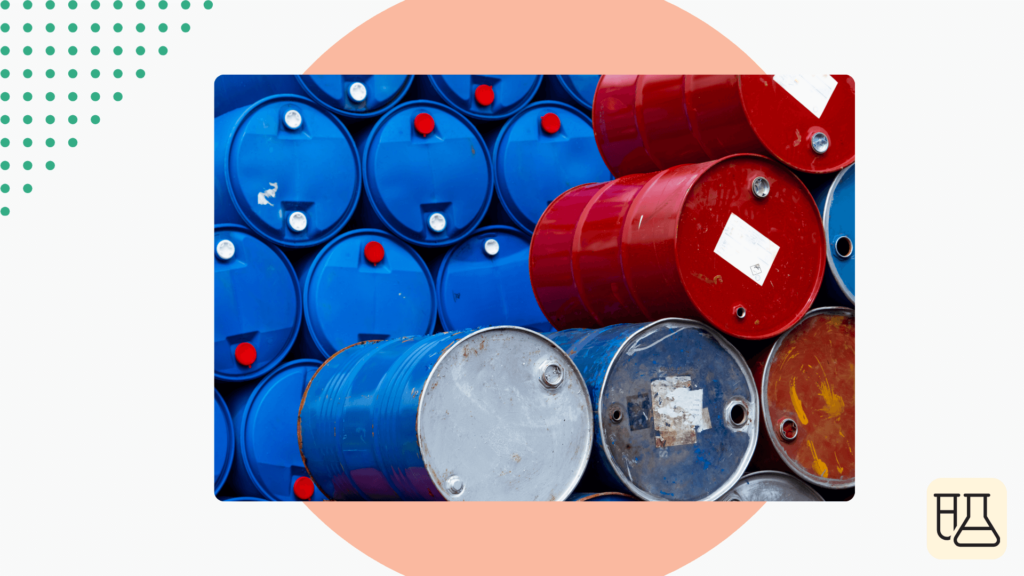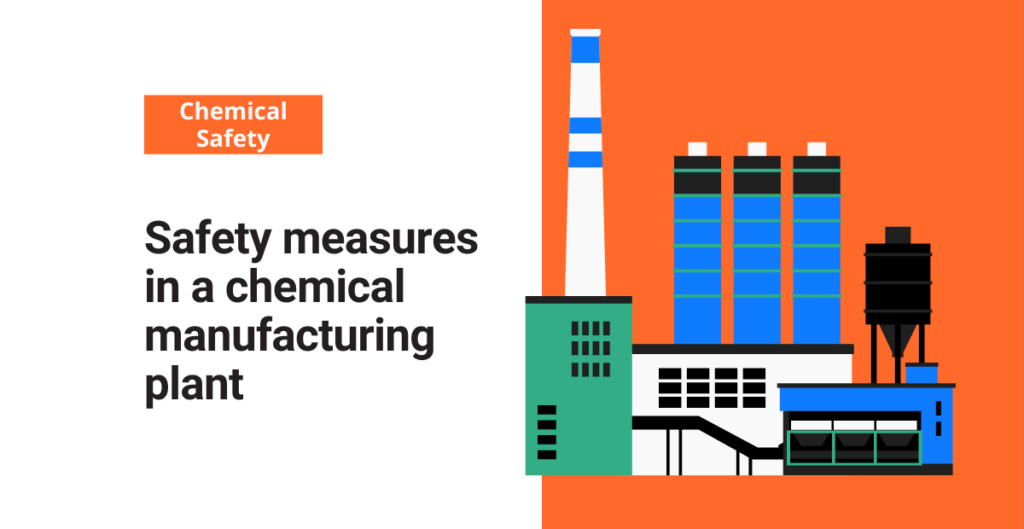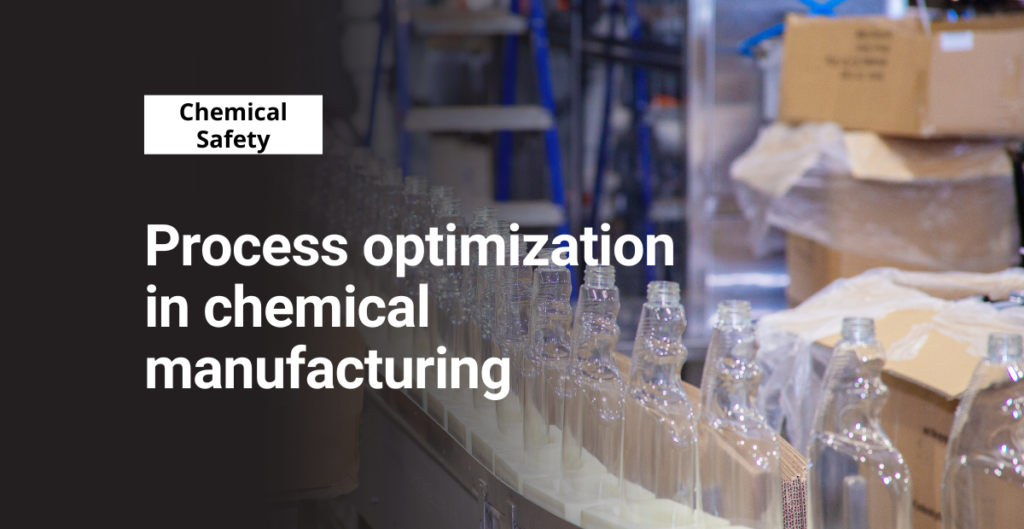In the Frontline webinar Workplace Chemical Safety Tips and Best Practices, guest expert Daniel Hughes shares insights from his 40-year career in chemical hazard management.
Alongside Frontline CEO Ren Lu You, Hughes discusses some of the major concerns that companies need to address when it comes to proper chemical disposal. The speakers also touch on the diversity of chemical hazards that businesses deal with and how the principles of safe handling and disposal can apply to many industries.
Free Download
Download this free hazardous chemical risk assessment form to audit what you have onsite.
Chemical Exposure Hazards
According to Hughes, you need to do a hazard assessment and risk analysis before interacting with hazardous chemicals in any way. These are the questions he says you need to answer about the chemicals you want to investigate:
- What is the chemical?
- What is its form?
- What are the routes of exposure?
- How many employees might be exposed to the chemical?
- What are the levels of exposure that workers might encounter?
- What are the permissible levels of exposure?
Hughes also notes that the OSHA permissible exposure levels are the most important ones to pay attention to because they’re the ones that are enforceable. Then, he goes into the four main routes of exposure and explains each one as it pertains to chemical hazard prevention.
He says that the most serious route of exposure is respiratory. That’s because it has the quickest path to the bloodstream and is the one that can cause the most damage in the shortest amount of time.
A great piece of advice that Daniel Hughes gives is to keep an eye out for ingestion and injection hazards. He says that facilities may overlook these types of hazards and their severity levels because they don’t always enter the bloodstream in an obvious way. Hughes points out the many ways that a chemical hazard can be ingested through the skin, and reiterates that these routes of exposure should not be an afterthought when it comes to incident prevention.
Getting to the Root of Chemical Safety Incident
Later in the webinar, Lu You and Hughes go into best practices for chemical incident investigation. Hughes notes that businesses often start their investigation process with a deep dive into past incidents and injuries. Instead, he suggests that companies start with an overview of their past hazard and risk assessments.
After doing this, businesses can find areas of improvement in their hazard control process. Hughes also suggests looking at the site’s hierarchy of controls and determining whether it’s effective enough to prevent repeat incidents.
Then, Lu You asks about the mistakes that companies make with their risk assessments. In many cases, Hughes says, companies don’t have chemical-specific training. They only focus on hazard control measures and general workplace protocols.
Instead, the focus needs to be more on how to prevent these hazards through safe handling practices and various techniques. With a more specific training program, sites can ensure that their workers know how to prevent incidents, rather than just react to them.
To get a full rundown of all the common mistakes that Daniel Hughes has seen companies make, check out the full webinar.
Daniel Hughes Webinar Q&A
At the end of the webinar there is a Q & A section. During that time, Hughes gives recommendations for communities and resources that professionals can use to further their career in chemical hazard prevention. He also answers questions regarding his time destroying weapons for the government, one of the most unique experiences in his impressive career as a safety professional.
You can watch a full version of the webinar below and subscribe to our newsletter for notifications about upcoming EHS webinars, guides, resources, and more.
Connect with guest speaker Daniel Hughes through these channels:
Phone: 765-505-8630
Email: safetydanh@yahoo.com
Peak Safety Solutions Inc: https://www.peaksafetysolutions.net/

